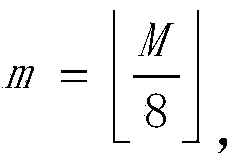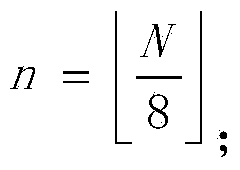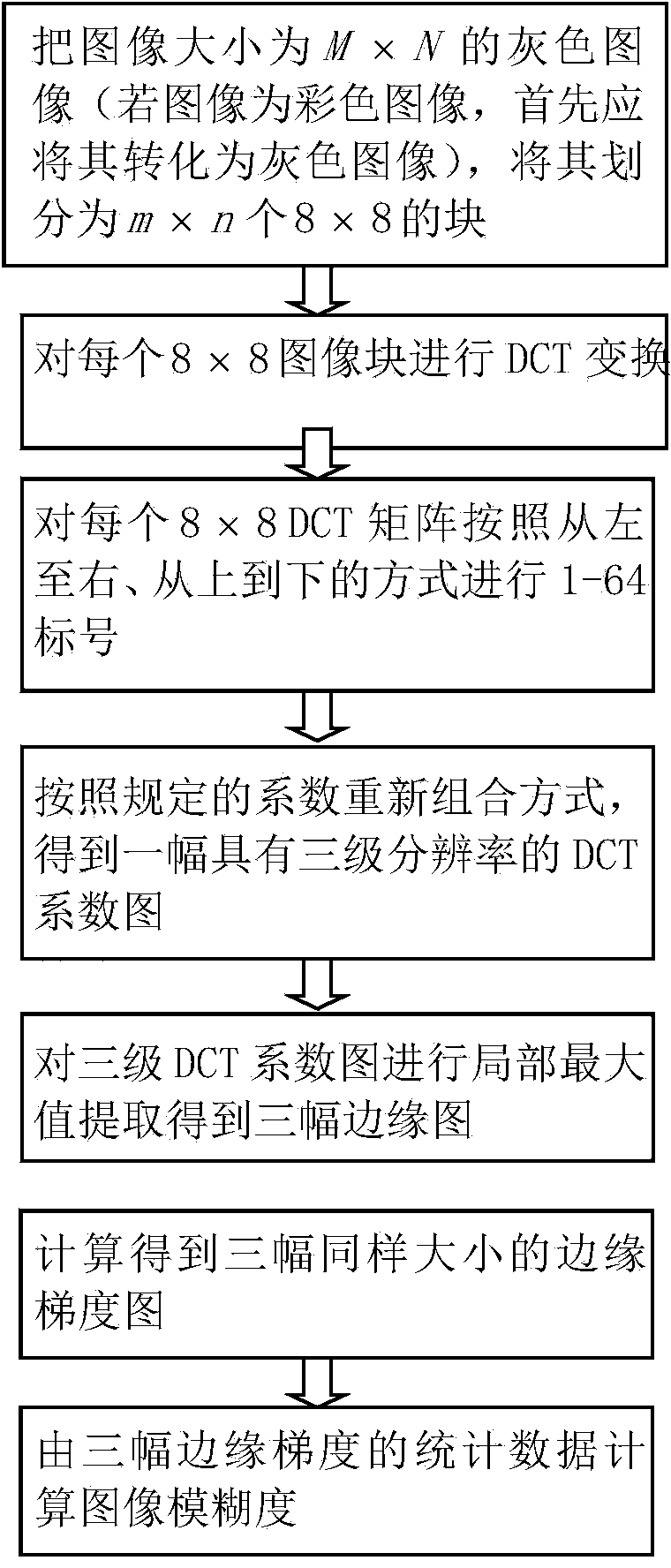No-reference image blur degree evaluation method based on multiresolution DCT edge gradient statistics
An edge gradient map and edge gradient technology, which is applied in the field of electronic information science, can solve the problems of inability to evaluate the blurriness of images, difficulty in distinguishing the blurriness of two images, and inability to obtain absolute blurriness values. Accurate effect
- Summary
- Abstract
- Description
- Claims
- Application Information
AI Technical Summary
Problems solved by technology
Method used
Image
Examples
Embodiment Construction
[0040] Specific embodiments of the present invention will be described in detail below in conjunction with the accompanying drawings, but this does not constitute a limitation of the present invention.
[0041] Such as Figure 1 to Figure 5 As shown, the present invention is based on multi-resolution DCT edge gradient statistics without reference image blur evaluation method, comprises the following steps:
[0042] (1) Assuming that the size of the target image to be evaluated is a gray image of M×N (if the image is a color image, it should be converted into a gray image first), divide it into m×n blocks of 8×8, where For each 8×8 image block, define g(x, y) as the pixel value at (x, y), and perform DCT transformation according to the following formula:
[0043] f c [g(x,y)]={D ων (g(x,y))}
[0044] Coefficient D ων (g(x,y)) corresponds to the pixel g(x,y), which is defined as follows:
[0045] D ων ( g ...
PUM
 Login to View More
Login to View More Abstract
Description
Claims
Application Information
 Login to View More
Login to View More - R&D
- Intellectual Property
- Life Sciences
- Materials
- Tech Scout
- Unparalleled Data Quality
- Higher Quality Content
- 60% Fewer Hallucinations
Browse by: Latest US Patents, China's latest patents, Technical Efficacy Thesaurus, Application Domain, Technology Topic, Popular Technical Reports.
© 2025 PatSnap. All rights reserved.Legal|Privacy policy|Modern Slavery Act Transparency Statement|Sitemap|About US| Contact US: help@patsnap.com



